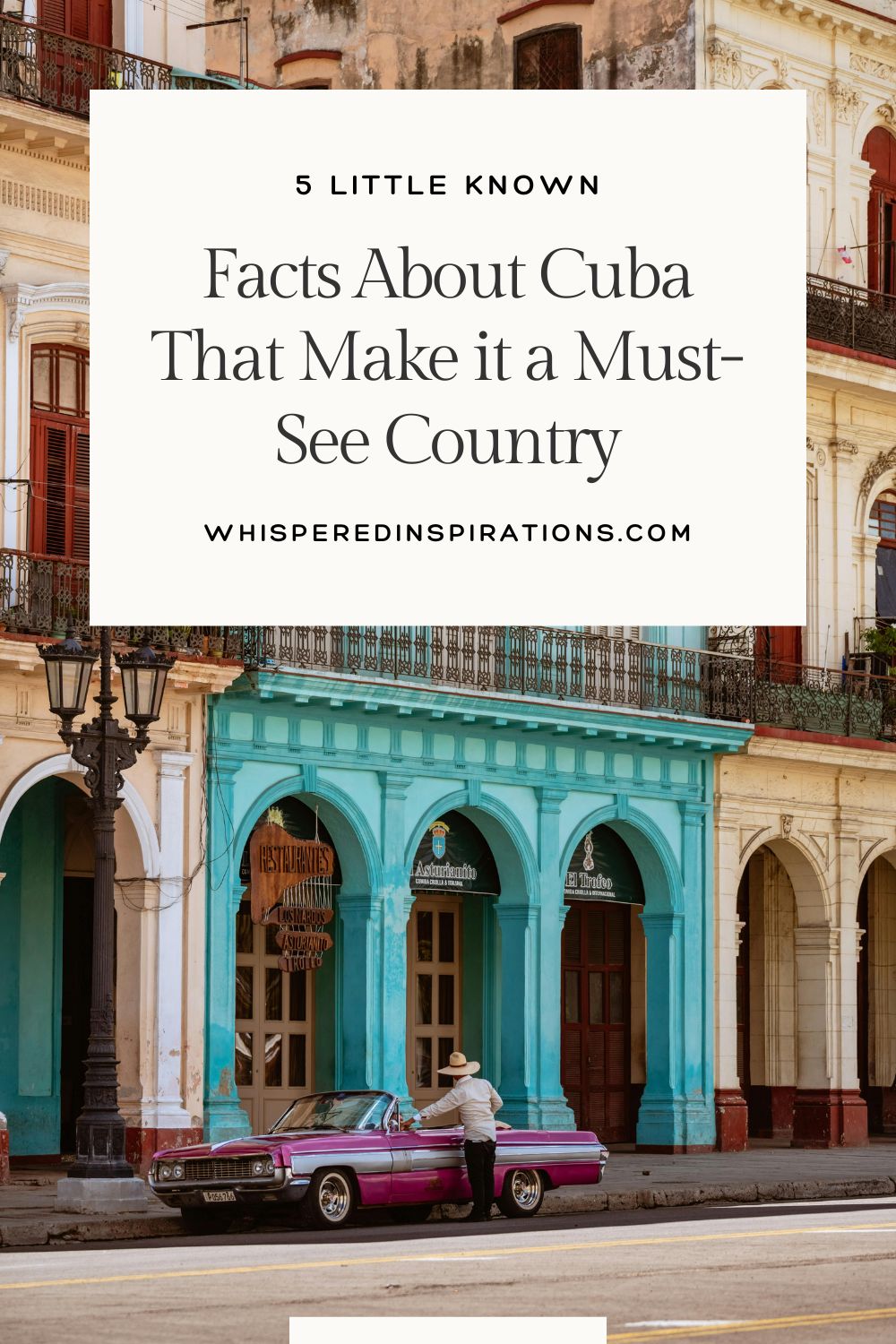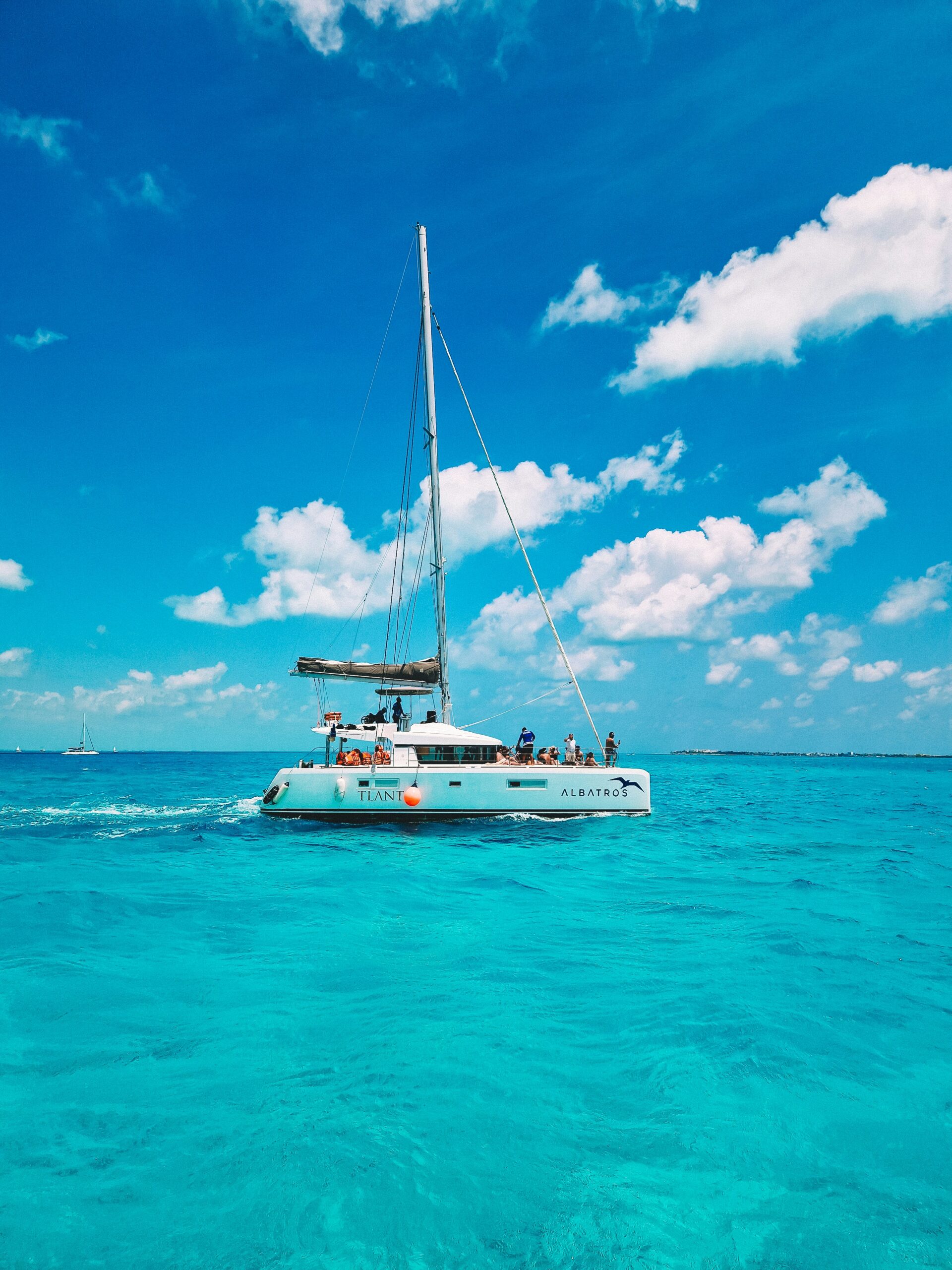5 Little Known Facts About Cuba That Make it a Must-See Country

Little Known Facts About Cuba That Make it a Must-See Country
Cuba, an island nation just 90 miles from Florida’s shores, has long captivated travelers with its vintage cars, vibrant music, and revolutionary history.
Yet beyond these familiar images lies a country of extraordinary depth and complexity that remains unknown to many visitors.
For those willing to venture beyond the typical tourist experiences, Cuba offers unexpected treasures that make it truly worth exploring.
Read on for some fascinating facts about Cuba.
Cuba’s Remarkable Biodiversity
While many associate Cuba with its cities and beaches, the island is actually home to some of the richest biodiversity in the Caribbean.
The Alejandro de Humboldt National Park, a UNESCO World Heritage Site, harbors thousands of native plant species and numerous endemic animals found nowhere else on Earth.
The tiny bee hummingbird, the world’s smallest bird, measuring just over two inches, flits through Cuba’s forests.
Meanwhile, in the Zapata Swamp, the rare Cuban crocodile thrives in protected habitats.
Perhaps most surprising to visitors is Viñales Valley’s mogotes. Ancient limestone formations housing complex cave systems with prehistoric paintings and unique ecosystems that have developed in isolation for millennia.
These natural wonders remain relatively untouched compared to other Caribbean destinations. They offer nature enthusiasts genuine exploration opportunities far from crowded tourist paths.
Cuba’s Remarkable Healthcare Innovations
“Despite economic challenges, Cuba has developed a healthcare system that has produced remarkable innovations unknown to most outsiders.
Many people are getting a tourist card to Cuba for medical tourism, not just to visit.”, states easytouristcard.com.
The country’s medical research facilities have pioneered treatments including Heberprot-P, a medication for diabetic foot ulcers that dramatically reduces amputation rates, and CIMAvax-EGF, a therapeutic lung cancer vaccine that extends patients’ lives significantly.
Cuban doctors have also developed meningitis B and hepatitis B vaccines used worldwide.
The Latin American School of Medicine in Havana has trained thousands of doctors from disadvantaged communities across the globe at no cost to students.
Visitors can arrange tours of medical facilities and research centers to learn about these achievements firsthand.
This medical diplomacy represents a fascinating aspect of Cuban society that reveals how the country has turned necessity into innovation. All by creating healthcare solutions that wealthier nations are increasingly studying.
The Living Art of Afro-Cuban Religions
Beyond the Catholic façade of Cuban society exists a rich tapestry of Afro-Cuban religious traditions that profoundly influence daily life.
Santería, Palo Monte, and Abakuá spiritual practices blend African beliefs with Catholic elements, creating unique cultural expressions that survived centuries of oppression.
These traditions are not museum pieces but living practices central to many Cubans’ lives.
In neighborhoods throughout Havana and other cities, ceremonies featuring intricate drumming, dance, and ritual offerings take place regularly.
What makes these traditions particularly special is that practitioners increasingly welcome respectful visitors to observe certain ceremonies and learn about their cultural significance.
The rhythms that emerged from these religious practices have deeply influenced Cuban music heard worldwide, though many listeners remain unaware of their spiritual origins.
For travelers interested in cultural immersion, witnessing these authentic expressions provides insight into Cuba’s complex identity that tourist-oriented folklore shows simply cannot match.
The World’s Finest Tobacco Grows in Specific Microclimates
Cuba’s reputation for premium cigars is well-known, but few understand the remarkable science behind Cuban tobacco cultivation.
In the western province of Pinar del Río, particularly around Viñales, unique microclimates create conditions impossible to replicate elsewhere.
The combination of rich red soil, precise humidity levels, and morning mist rising from the valley floor produces tobacco with exceptional qualities.
Local farmers, whose knowledge has been passed down through generations, still harvest leaves by hand and cure them in traditional wooden barns.
What makes this agricultural tradition truly special is that many tobacco farms welcome visitors to observe the entire process.
From planting to rolling.
Even non-smokers find themselves fascinated by the meticulous craftsmanship and cultural significance of these agricultural practices that have remained largely unchanged for centuries.
Even despite modern farming technologies available elsewhere.
Cuba’s Architectural Time Capsule
While Havana’s crumbling grandeur receives much attention, Cuba contains architectural treasures spanning five centuries that tell a remarkable story of cultural fusion.
The UNESCO-protected town of Trinidad preserves Spanish colonial architecture virtually unchanged since its sugar trade heyday.
In Cienfuegos, a surprising collection of French-influenced neoclassical buildings reflects the city’s unique founding by French settlers.
Perhaps most unexpected are the Art Deco and mid-century modern masterpieces scattered throughout Cuban cities.
Buildings that would be celebrated architectural landmarks elsewhere but remain largely unknown to international visitors.
Many of these structures now serve completely different purposes than originally intended. Former mansions house multiple families, and elegant theaters have become community centers.
You May Also Like:
- Visit Cuba: Rum, Delicious Cuisine, & More
- 3 of The World’s Most Beautiful Watersports Destinations
- Water Activities To Try While On Vacation
This living architectural museum exists because Cuba’s economic isolation after the revolution. Inadvertently preserved buildings that would likely have been demolished for development in other countries.
Today, restoration efforts proceed slowly but with remarkable craftsmanship. Artisans use traditional techniques to bring these structures back to life.
Cuba’s complexity extends far beyond the familiar images of classic cars and mojitos.
For travelers willing to explore with curiosity and respect, the island reveals layers of natural wonders, cultural depth, and human innovation that make it not just a vacation destination but a place of genuine discovery.
As Cuba continues its gradual opening to the world, now is the perfect time to experience these lesser-known facets and facts about Cuba, an extraordinary island nation.
Do you know any more little known facts about Cuba that make it a must-see country?
Let me know—til then, cheers m’deres!

PIN FOR LATER:


Nancy Polanco is a freelance journalist, lifestyle content creator, and editor of Whispered Inspirations. She is a proud Mom to Gabby and Michaela and partner and best friend to Darasak. Having worked as part of a health care team for almost a decade, Nancy is happy to be back to her passion. She is a contributor to the Huffington Post, TODAY’s Parents, and an Oprah Magazine Brand Ambassador.






